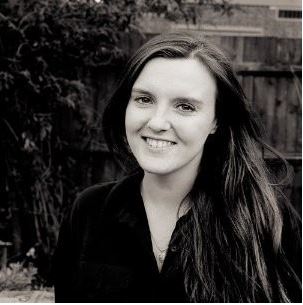It goes without saying that the coronavirus pandemic has had huge ramifications for civil society across the globe. From our perspective in the U.K., our side of the Atlantic has certainly seen its fair share of disruption. Almost overnight (in some cases quite literally, like when Britain went into its first lockdown last March), charity fundraising and service delivery either ceased or had to change dramatically.
Faced with an unprecedented crisis — and the U.K. charity sector facing a £10 billion shortfall nationally — our team at London Funders knew that we and our members needed to work together (and quickly) if we were going to effectively provide support to address immediate needs in the capital’s communities.
London Funders was established 25 years ago to bring together the capital’s many local, regional, and national charitable foundations with other key funders such as local government, housing associations, and corporate givers. Now 170 members strong, we encourage our members to connect, contribute, and cooperate to help Londoners to live better lives.
Our day-to-day work involves bringing funders together to tackle big issues or to “deep-dive” into specific problems in local areas. Prior to 2020, our biggest funder collaboration to date was coordinating a £4.8 million package of support in 2017 for the North Kensington area of the city following the Grenfell Tower Fire, which killed 72 people and displaced more than 200 households. Reflecting on that collaborative effort in the context of other pressing social problems in the city, one funder said, “I’ve been thinking about domestic violence and all the women who are murdered every year. We need to respond with the same level of urgency.”
It was this philosophy and background knowledge that helped us to hit the ground running when COVID-19 took over our lives. Using the funder portal we developed in 2017 for the North Kensington program, a group consisting of the Mayor of London, Bloomberg, and City Bridge Trust (the City of London Corporation’s charitable funder), all made an initial commitment to work together on a crisis-funding package for the capital’s charitable sector. Having these three big names on board helped us to reach out to the rest of our member organizations (and beyond) to recruit more funders to pool or align support through the London Community Response fund.
As a single entry point for civil society organizations to apply to multiple funders, the London Community Response partnership has united numerous funders through common principles and a common application form. All funders involved have been generous with sharing insight and intelligence, and have accepted that funding priorities may need to differ over time to reflect the rapidly changing needs of communities.
How does it work? Through an online platform, participating funders view the same pool of applications and can “hold” an organization whilst due diligence and decision-making takes place. London Funders manages the overall process and works with funders and the rest of the sector to agree priorities, mechanisms, and shared reporting goals.
So far, 67 funders have contributed to the London Community Response and over £46 million (and counting) has been distributed to civil society organizations in every London borough. One grantee said, “Charities were pushing to make [a] single application [and] single monitoring form since 25 to 30 years ago — especially for equalities organizations which tend to be smaller and less well funded. London Funders finally did it with [the London Community Response].”
In terms of the number of funders involved, such a huge program is unprecedented in the U.K. Understandably, there has been a very steep learning curve. And, like many in the sector, we’ve been grappling with the dilemma of getting money out the door quickly versus carefully using data and intelligence to guide funding decisions.
We’ve found that several things have helped us to stay the course. Early actions taken by the London Community Response strategic group (which consists of chief executives and senior staff of contributing funders) played a vital role in making sure that we were reaching the right organizations in the right places. A main contributing factor to the collaborative’s success was the decision to proactively fund six equity partners to act as both a “critical friend” during the design process, and to support their networks to apply (and with strong applications) to the London Community Response. We knew that it was paramount to ensure that marginalized voices were heard and amplified, as it very quickly became clear that COVID-19 was not a “leveler,” and that the health and economic effects instead exposed the huge inequalities that exist within British society.
We’ve also been learning as we go and have been using real-time intelligence to drive the direction of the fund. Analysis from DataKind UK has been invaluable in helping us to have a broader view of where funding is going (including identifying the “cold spots” that we needed to focus on), which builds on work we’ve done over recent years to map funder investments across London. Regular sharing calls with our members have also been incredibly helpful, as have weekly catchups with other infrastructure bodies outside the funding sector.
With a national vaccination program underway, we’re consulting with our members and London’s communities about what recovery should look like in the days ahead. There have been many calls in the sector to not “return to normal,” and this emerged as a prominent theme at our recent member conference. One of our trustees, Yolande Burgess, said, “Work has taken place to make sure that we recover from the crisis, but we also know that it needs to go far beyond the recovery, because what we had before didn’t serve all the people of London.” ![]() We couldn’t agree more.
We couldn’t agree more.
Now, a year on from the start of the pandemic, we’re working on wave five of the London Community Response. Funders are once again coming together to respond to the new emergencies facing communities, as well as to provide longer term support to ensure the stability of the sector. In line with the goal of not simply returning to normal, wave five’s longer-term funding will look to make London a fairer city for everyone, in every part of the capital.
As we undertake this work, we’re all too aware that funder practice needs to change if we’re going to fix wider structural societal issues. The main question that’s running through all of our minds is: “Will it stick this time?”
Funders have responded to extraordinary circumstances before. And yet, despite good intentions, old habits can be hard to change. We’re feeling both hopeful and motivated as we look toward renewal. The London Community Response has shown that funders can and should step outside of our “normal” ways of working for a sustained period. As one funder said to us recently, “I just don’t understand why we didn’t collaborate like this before.”
Geraldine Tovey is the membership, communications and events manager at London Funders. Follow them on Twitter at @LondonFunders.




